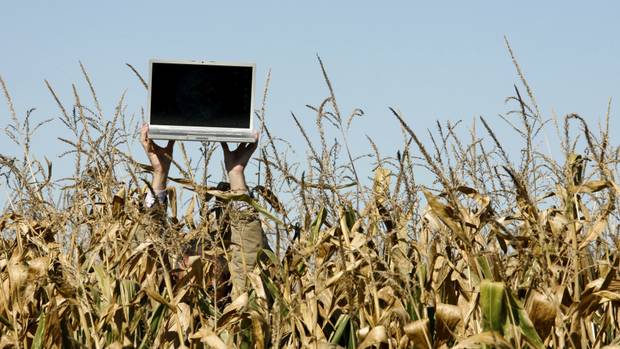 For those that don’t live in the heart of a metropolis, logging into the interweb may just be a timely, expensive process. Rather than free hi-speed WiFi lining the blocks, online access is hard to come by, is slow, and not all that reliable. To the majority of the population, however, this may come as a shock. When web access is so readily available, it’s hard to remember that it’s not a luxury for the entire country.
For those that don’t live in the heart of a metropolis, logging into the interweb may just be a timely, expensive process. Rather than free hi-speed WiFi lining the blocks, online access is hard to come by, is slow, and not all that reliable. To the majority of the population, however, this may come as a shock. When web access is so readily available, it’s hard to remember that it’s not a luxury for the entire country.
According to the FCC, 19 million Americans don’t have access to hi-speed or broadband Internet. These figures are purely location wise; the option to purchase isn’t available. For comparison, that’s the same size as the U.S.’s seven most populous cities combined: New York City, Los Angeles, Chicago, Houston, Philadelphia, Phoenix, and San Antonio. Can you imagine any of them without hi-speed Internet? Let alone all of them?
Slow to Grow
While steps are being taken to get these rural communities connected, it’s safe to say they’re going nowhere fast. Grants are being awarded for communities to dig cable or obtain broadband access, for instance, in rural Kentucky, while Internet companies themselves are slow to move forward.
In fact, many communities don’t have access to cable Internet – and never will – simply because of their population. Even in communities where cable lines are only a few miles away, companies won’t lay the extra line because there’s not enough business to be gained. To the rest of us, this seems like a no-brainer; once the work is done, there’s steady profit flowing in. But apparently, that isn’t the case.
Some rural communities are looking to broadband connections instead, which works via satellite, however this is a lot slower, inaccessible in certain weather events, and equally expensive at 1/20th of the speed. Personal satellites are also available, but are almost double the price and limit one’s usage; half of paid data has to be obtained between 2 and 8 am (though some companies’ hours differ slightly). Yet because this is many users’ only option, there are growing wait lists, depending on location.
So what will save these rural Internet users? Will enough grants finally come through to grant them online access? Or will Google Fiber upstage every current Internet provider and bring in lightening-fast Internet to those whose current option is dial-up? Whatever the answer, it’s beyond time. Nineteen million people is just too high of a number to ignore.


Leave a Reply
You must be logged in to post a comment.